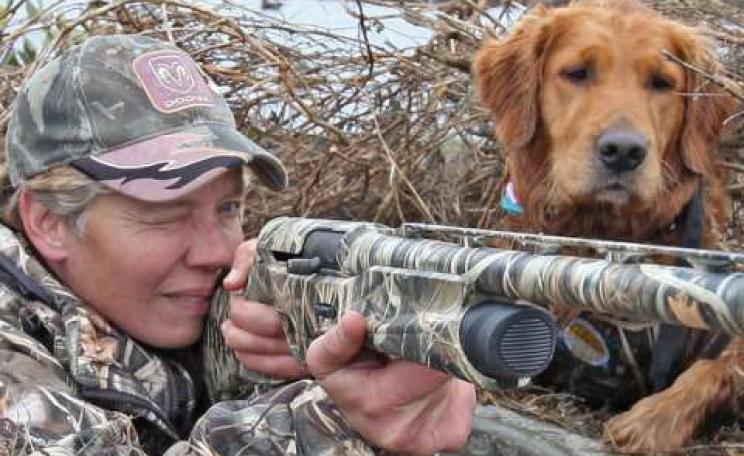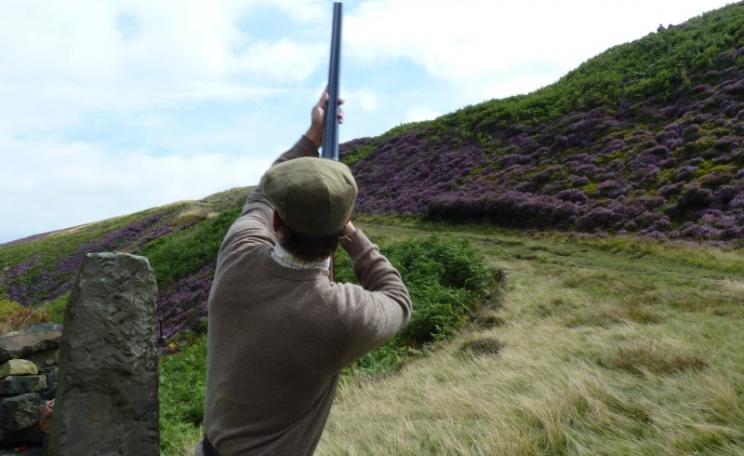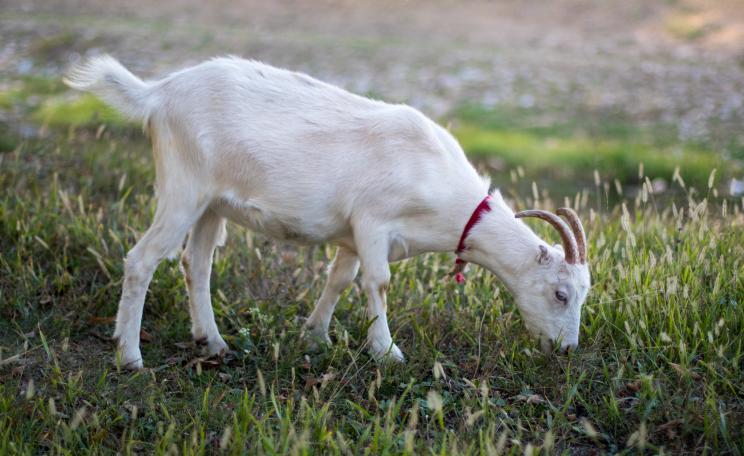Condors, bald and golden eagles, ravens, turkey vultures, and at least another 70 wild bird species may be poisoned by lead ammunition.
Recently scientists from the Zoological Society of London and Yale University assessed the world's 9,993 bird species according to their evolutionary distinctiveness and global extinction risk.
At number three on the list is the Critically Endangered California condor (Gymnogyps californianus) - weighing as much as 25 pounds, standing over four foot tall, with a wingspan of almost 10 feet, it is the largest land bird in North America.
Riding on wind currents to heights of 15,000 feet and travelling up to 150 miles a day in search of food, these majestic birds once flew by the thousands above the California land mass and far beyond.
The condor flies again
Sadly, condor numbers dropped so drastically that in 1987 the last living wild condor was taken into captivity and put into a breeding program to save the species.
Now only 238 free-ranging condors - all descendants of captive breeding in the Condor Recovery Program initiated in the early 1980s -inhabit the skies above California, Arizona, Utah, and Baja California. A further 195 are in zoos, captive breeding programs, or being held for release or medical treatment.
This is a far cry from sustainable population numbers but it is also far better than the numbers in April 1987 through 1991 when the North American skies were empty of condors.
Although one of the very first species listed under the Endangered Species Protection Act of 1966, condor populations plummeted for decades. How did things go so wrong?
Humans took a heavy toll: habitat loss and destruction, hunting, egg and specimen collecting, the capturing of live birds, ingestion of DDE (a breakdown form of the pesticide DDT), accidental ingestion of lead from spent ammunition and other assaults, decimated the species' numbers to the point of near extinction.
A third of condors suffer from lead poisoning
Today, most of these problems have been ameliorated. But one huge hazard remains: the leading cause of mortality to condor populations and the number one threat to condor recovery is still lead poisoning from spent ammunition.
A 2012 study by the University of California at Santa Cruz by Myra Finkelstein and others found that "condors in California remain chronically exposed to harmful levels of lead."
"30% of the annual blood samples collected from condors indicate lead exposure (blood lead ≥ 200 ng/mL) that causes significant subclinical health effects ... Furthermore, each year, ∼20% of free-flying birds have blood lead levels (≥450 ng/mL) that indicate the need for clinical intervention to avert morbidity and mortality."
And the authors are clear as to the source: "Lead isotopic analysis shows that lead-based ammunition is the principle source of lead poisoning in condors." In other words, ingesting lead shot or fragments of lead bullets when feeding on carcasses.
Condors, bald and golden eagles, ravens, turkey vultures, and at least another 70 wild bird species may be poisoned by lead ammunition.
Finkelstein's research also shows that without greatly reducing or eliminating the risk of lead poisoning, condors are unlikely to ever be able to establish a self-sustaining population:
" ... population models based on condor demographic data show that the condor's apparent recovery is solely because of intensive ongoing management, with the only hope of achieving true recovery dependent on the elimination or substantial reduction of lead poisoning rates."
Only one answer - get the lead of of ammunition
John McCamman, California Condor Recovery Coordinator for the United States Fish and Wildlife Service, agrees: "Lead poisoning of California condors from feeding on the carcasses of animals shot by hunters, ranchers, and poachers is the principal obstacle to conservation and recovery of the species."
Kelly Sorenson, a former hunter and the executive director of the Ventana Wildlife Society, the first private non-profit in California to release condors into the wild, concurs:
"Lead trumps everything in condor recovery. I don't think we have any hope of condors sustaining themselves in the wild without a switch from lead to non-lead ammunition."
In fact the Ventana Wildlife Society believes that the literature linking lead poisoning in condors to lead from spent ammunition is so strong, that they have been handing out free non-lead ammunition to hunters since 2012.
Clearly, supporters of a lead ban are not anti-hunting. In fact, many of the proponents of the ban feel that hunting is actually good for condors, as long as it is done with non-lead ammunition, because it provides a safe and natural food source that condors have to find on their own (promoting natural foraging behaviour).
Good news - but a long wait
Fortunately, in October 2013 the Governor of California signed into law Assembly Bill 711, which bans the use of lead-based ammunition whilst hunting all wildlife throughout the entire state. This builds on an existing state prohibition in place since 1st July 2008 on using lead ammunition for wildlife shooting in designated condor range areas.
The law makes California the first state to ban the use of lead ammunition for all hunting purposes. It's the most extensive ammunition ban in the United States, and creates a legal recognition that lead ammunition is a danger to wildlife, humans and the environment.
"Moving forward and reducing lead exposure is only going to benefit human and animal health, and hopefully, California can lead the way", according to Finkelstein.
Yet look at the detail of the law, and it falls short of some campaigners' hopes. First, the ban will be phased in over a five year period and only come into full effect on July 1, 2019 - so condors will have to survive a lot more lead peppering the California landscape.
Lead ammunition will still be for sale
And even then, lead-based ammunition will still be available in the marketplace, and completely legal, for range shooting and ranch management activities involving domestic stock.
So the carcasses of domestic animals could still be legally riddled with lead and be available to free-flying foraging condors and other species of wildlife. Moreover the new restrictions will have little or no effect on poachers, who are already operating outside the law.
And of course, this law does not cover areas outside California where condors are found - including Arizona, Utah and Baja California, Mexico. This is crucial as condors typically cover distances of 150 miles or more per day.
And ultimately, to put the species on a secure long term footing, the aim must be to restore condors into more of their historic range - along the West Coast from Mexico north to British Columbia, Canada; and across the southern US to Florida.
Yes, this bill will probably help reduce the amount of lead in the food chain. But, as John McCamman says, "even a little lead can cause a lot of damage."
In order for condors to have a chance for survival in the wild and be removed from the list of the world's 100 most Evolutionarily Distinct and Globally Endangered (Edge) species, campaigners believe, lead-based ammunition will have to be eliminated from the environment.
Extending the ban to other states
Unfortunately, with the exception of hunting on federal lands, hunting regulations fall under state and provincial jurisdiction, leading to significant variation in ammunition restrictions across the continent.
Fortunately the passing of the bill in California has made other states and other legislators sit up and take notice. But, getting other states to follow California's lead is not going to be easy.
The connection between the ingestion of spent lead-based ammunition (as long ago as the 1950s it was realized that significant die-offs in various waterfowl populations were directly due to the ingestion of lead) and lead toxicity is not a new revelation.
All scientific studies, to date, show that the origin of lead poisoning in condors is from spent lead ammunition.
NRA - the lead comes from paint, not bullets
Yet the National Rifle Association (NRA), which has always disputed the links between lead-based ammunition and condor deaths, "oppose any attempt to ban lead ammunition for any hunting".
The NRA has even been instrumental in setting up a special purpose website Hunt for Truth, operated by its lawyers Michel & Associates, to fight any bans or restrictions on lead ammunition.
It argues, for example, that the lead found in condors does not arise from ammunition but from other environmental sources, such as fragments of lead-based paint - but fails to cite any peer-reviewed science in support of its claim.
Now they are carrying their campaign to neighbouring states so that what has happened in California does not cross state lines.
Condors, bald and golden eagles, ravens, turkey vultures, and at least another 70 wild bird species and many other scavenger species, pets and humans, however, do cross state lines and may be poisoned by lead ammunition.
There is no safe level of lead
As David Bellinger, an environmental health researcher at the Harvard School of Public Health, observes,
"There's no safe level for lead. Animals and birds that eat carcasses shot with lead bullets and hunters who eat a lot of meat shot with lead ammunition risk being exposed to this toxic metal. We have to eliminate lead-based ammunition from the environment."
Quite simply, lead exposure is a risk to all that consume an animal killed by lead-based ammunition and as long as this ammunition is freely available and present there remains an ongoing problem not just for condors but for ourselves and our environment.
Dawn Starin is honorary research associate at University College London. She conducts and writes about anthropological and environmental research. Her articles have been published in Christian Science Monitor, Daily Telegraph, Ecologist, Index on Censorship, New Internationalist, New Statesman, The New York Times, The Times of India, and Yes!, amongst others.
Note: Lawyers apparently acting for the NRA have demanded a partial retraction of this article. We have made a minor amendment to it and published our full response on this website.







